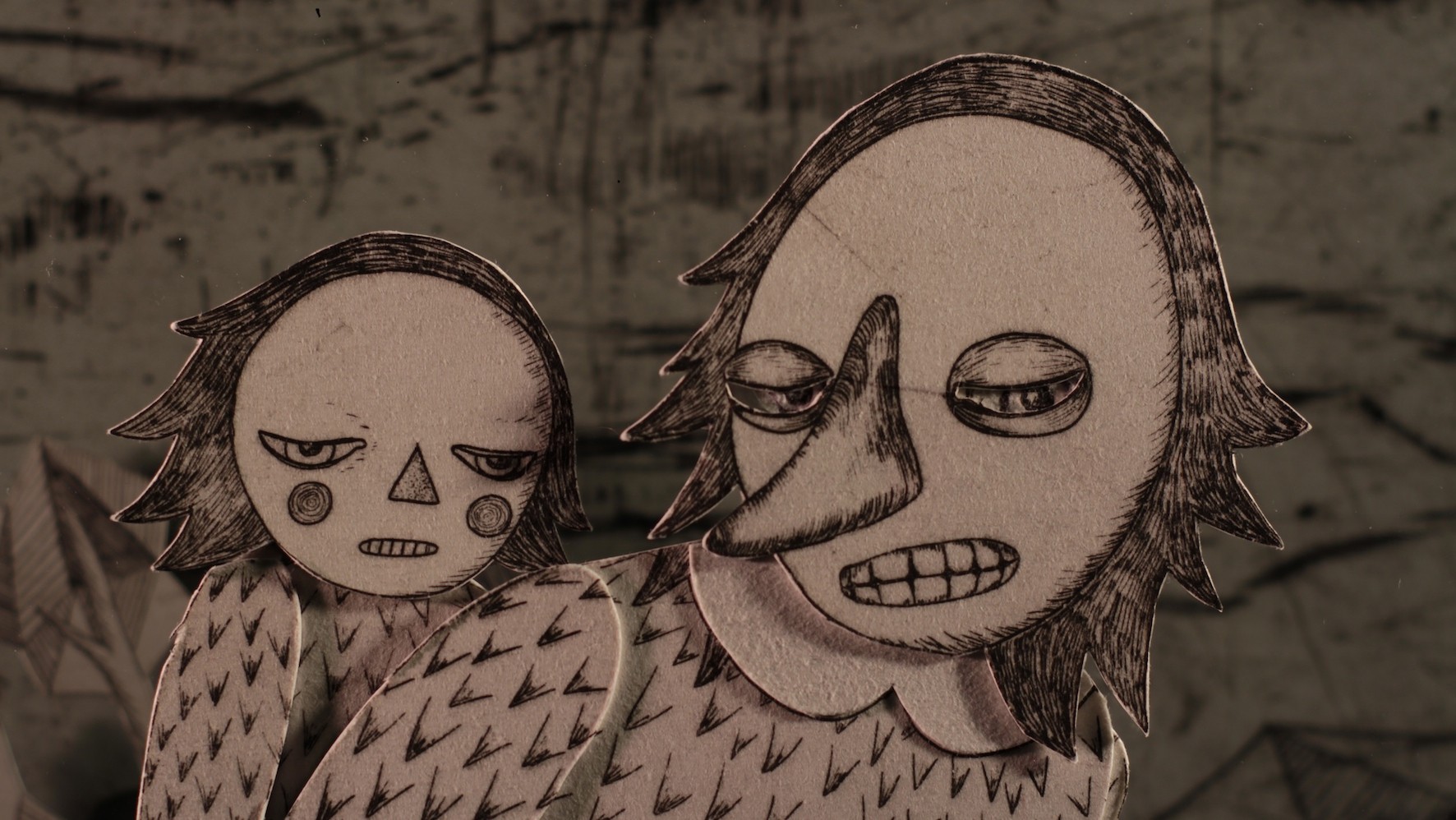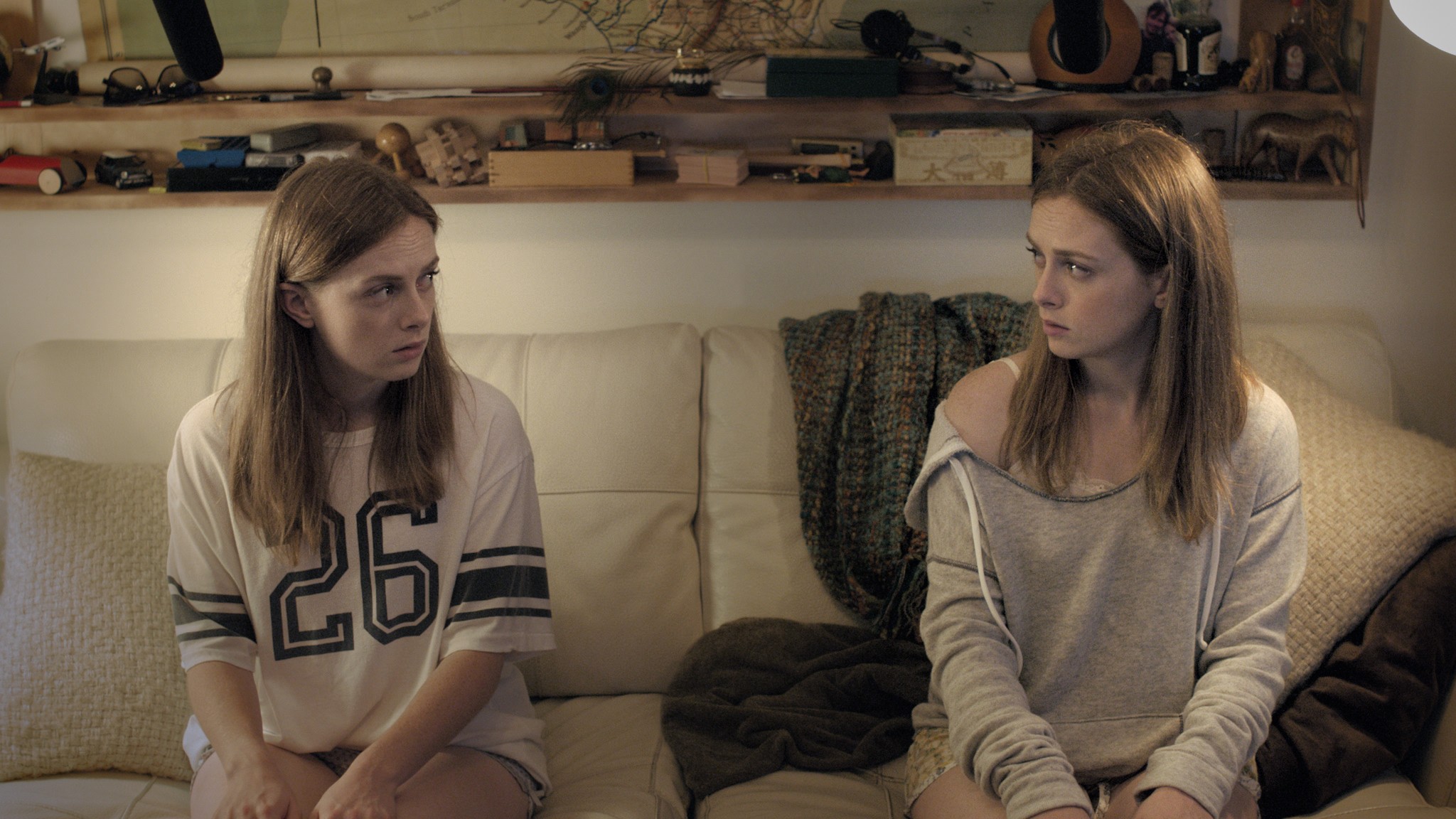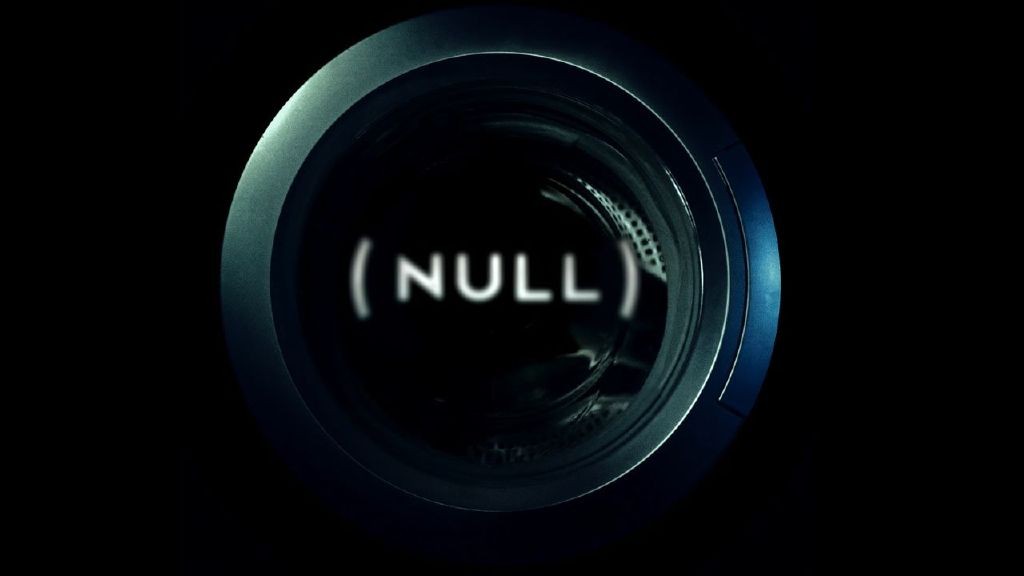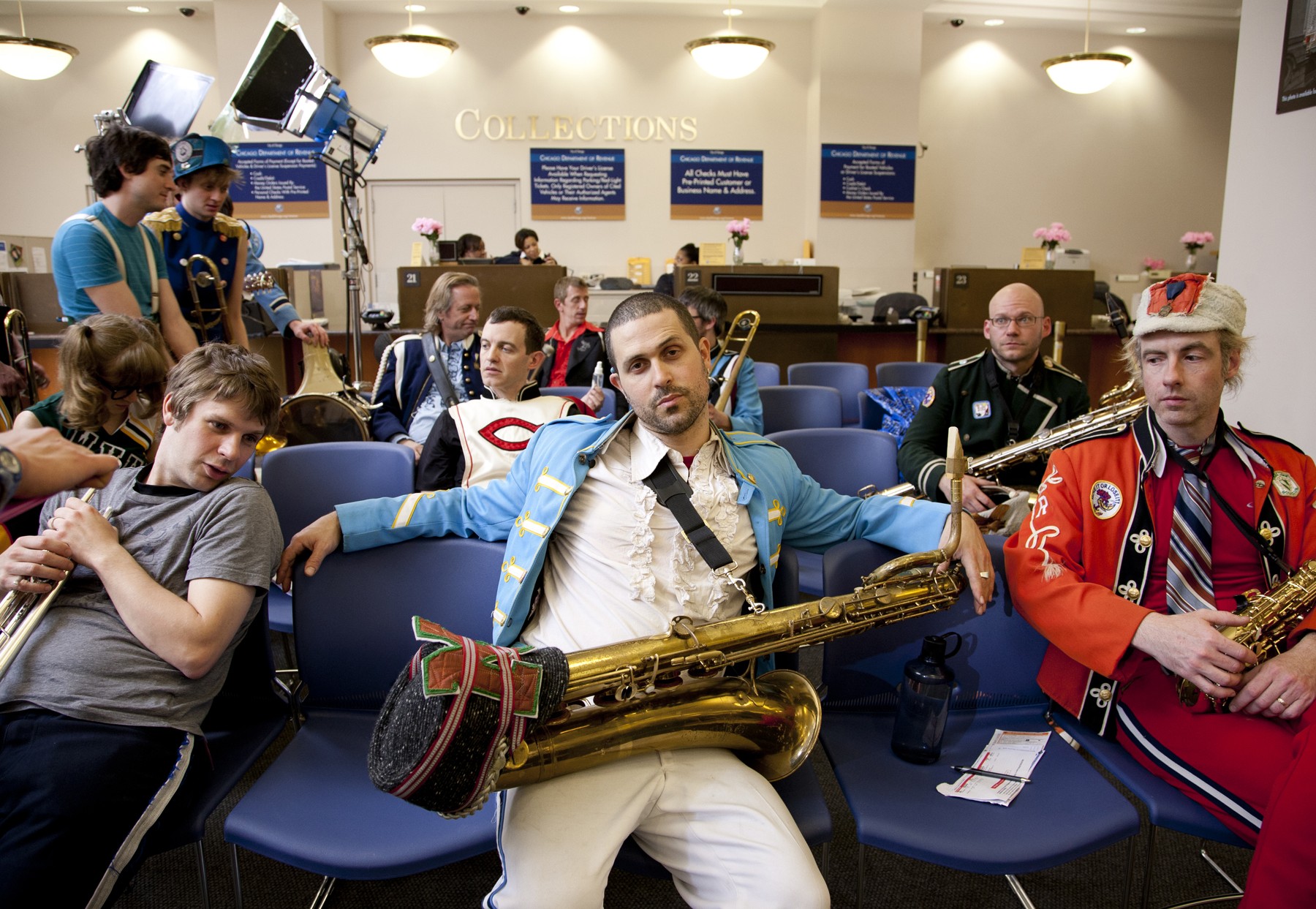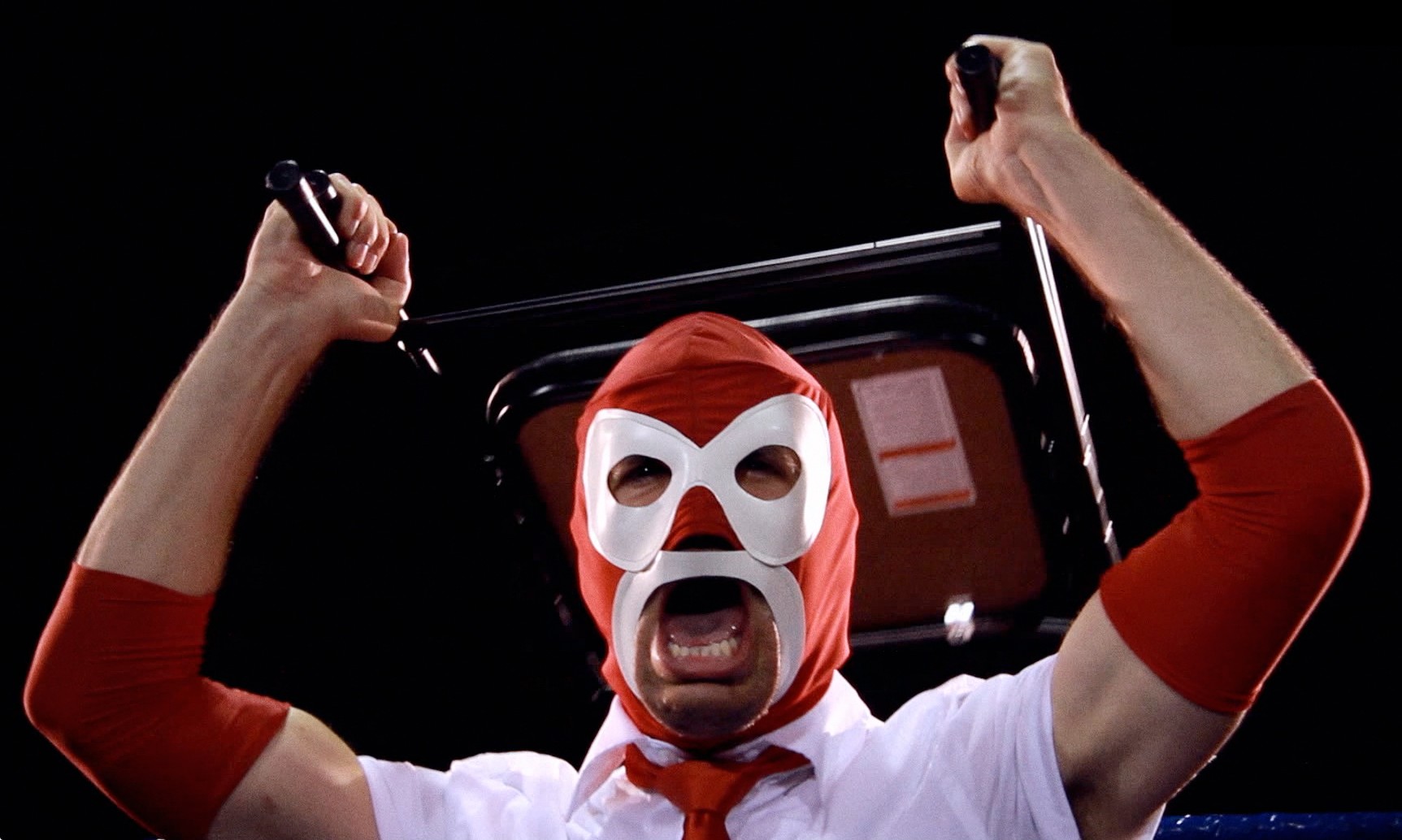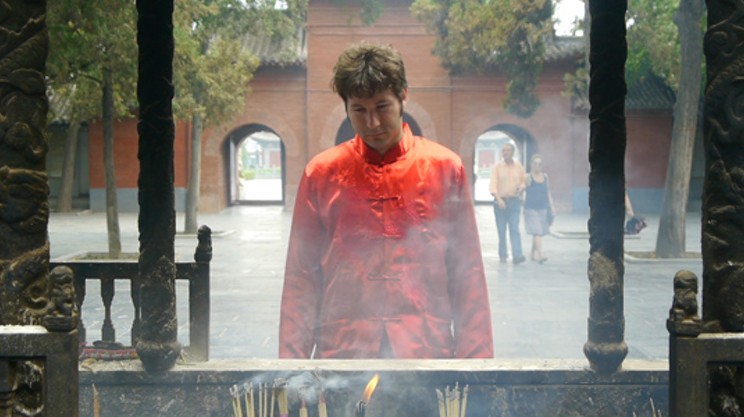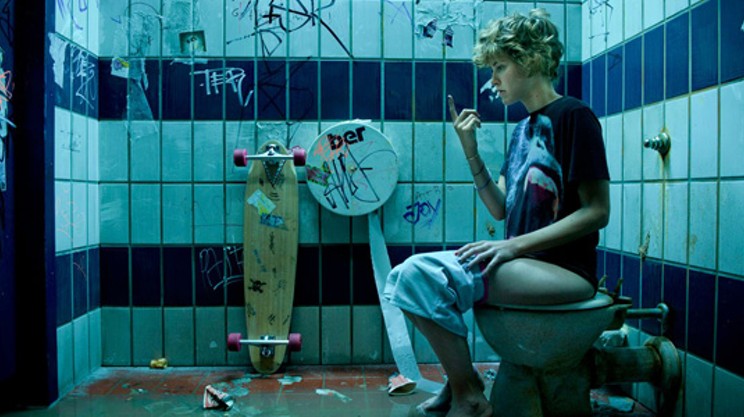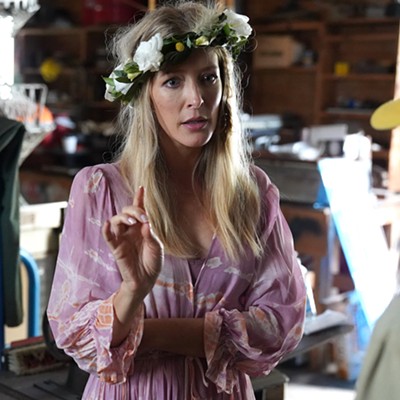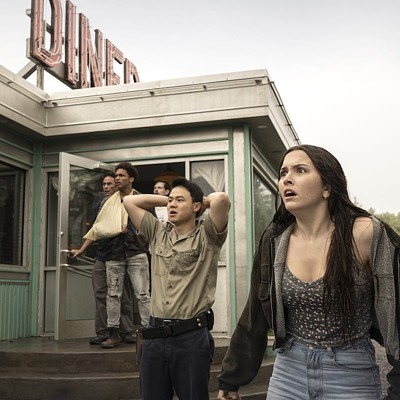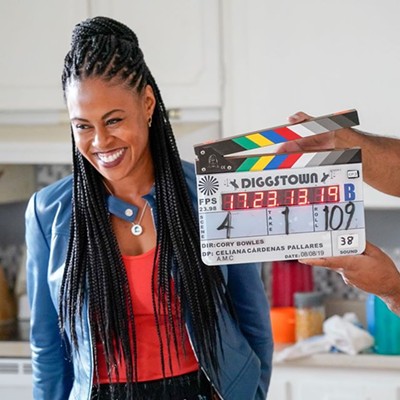To celebrate the first night of the magical, sci-fi, horror, experimental and straight up strange film festival in Halifax, Outlier Film Festival, (Nov 27 to 29) we decided to go micro and put together all the info you'd care to know about the shorts—those tiny gems that'll screen before select Outlier features—straight from the mouths of the directors.
FILM: Palimpsest
DIRECTOR: Daniel Boos
SCREENING: Thursday, November 27, 7pm at Halifax North Memorial Library, 2285 Gottingen Street, before The Creeping Garden
TELL US ABOUT IT: Pieced together from a stockpile of discarded 8mm home movies, Palimpsest is an experimental film that transports the viewer into the life of an anonymous family from 1950s Nova Scotia. The material disintegration of the found-footage is simulated to evoke the haunting beauty of analogue film’s unique impermanence. Palimpsest was made using obsolete analogue equipment such as optical printers, contact printers, and manual photogramming techniques between the Atlantic Filmmakers Co-op and the no.w.here film collective in London, UK. The film was chemically processed by hand and was made with the generous support of the Atlantic Filmmakers Co-op Open Grant program and Arts Nova Scotia (formerly Nova Scotia Communities, Culture and Heritage Department).
The sound for the film was created by Chuck Blazevic (Dreamsploitation; You’ll Never Get to Heaven). It was made from samples of music boxes.
Palimpsest was selected to compete for the Gold Hugo for Best Short Film and the Golden Plaque for Best Experimental Short Film at the Oscar-qualifying Chicago International Film Festival in October, 2014.
WHAT INSPIRED YOU TO MAKE IT: These days, filmmakers in the industry rely almost exclusively on digital media and technology to create their films. The workshops and old analogue film and development equipment at AFCOOP inspired me to show that it was still possible to make films on film with only a meager budget. Experimental filmmakers Peter Tscherkassky, Bill Morrison, Arthur Lipsett, and Jonas Mekas were among my biggest influences. In the summer of 2012 I began collecting and watching anonymous 8mm films from across Halifax. I was captivated and touched by their sincerity and importance as lost relics of the past and it occurred to me that I could bring them to life before an audience in a new film. This new film inevitably became an ode and elegy to the bygone era of 8mm home cinema.
FAVOURITE LITTLE DETAIL: To generate Palimpsest’s photogrammed special effects, I had to work alone in complete darkness for hours on end with nothing but a 16mm film splicer, tape, a few flashlights and my own hands. It was the loneliest endeavor I’ve had to take in making a film! Another secret is that my blood is (accidentally) in this film—literally—but the audience will not notice because the film was made in black and white.
PALIMPSEST - TRAILER from Danny Boos on Vimeo.
FILM: Day 40
DIRECTOR: Sol Friedman
SCREENING: Thursday, November 27, 9pm at The Bus Stop Theatre, 2203 Gottingen Street, before What We Do In The Shadows
TELL US ABOUT IT: Day 40 is an animated short film that explores what really happened during the 40 days at sea on board Noah's Ark.
WHAT INSPIRED YOU TO MAKE IT: This short was a starting point for a feature film that I am developing called Ivan at the End of the World, which is about bears, zombies and the end of the world. I'm selling God-Shit-Hats to help raise funds.
FAVOURITE LITTLE DETAIL: Noah's wife is at the front of the line.
FILM: Elsewhere, the Survivors
DIRECTOR: Ali Aschman
SCREENING: Friday, November 28th, 6:30pm, Museum of Natural History, 1747 Summer Street, before The Strange Color of Your Body's Tears
TELL US ABOUT IT: This is the second film I have made. I started working with animation while in graduate school at the School of the Art Institute of Chicago, and I began making Elsewhere, the Survivors during a class on Experimental Methods in Animation taught by Chris Sullivan (whose amazing animated feature Consuming Spirits played in Outlier's program last year). It is a very personal film, that was almost cathartic to make. Most people interpret the figures as a mother and child, but for me they represent two aspects of the psyche that need each other's support. The larger puppet is me as presented to the world, and the smaller one is a part of me that I carry around in secret, a more innocent person that can be a guide but also needs protection. I had made a big painted version of these figures out of plywood for a storefront installation in Chicago, and felt that I hadn't fully told their story yet and needed to put them in motion.
WHAT INSPIRED YOU TO MAKE IT: I started with the form—I wanted to combine my printmaking and animation practices, and I wanted to make a short film that was aesthetically very consistent with a minimal colour palette. So I decided to make a cutout animation from etchings. I was also focusing on creating a narrative that was not explicitly linear, but is evocative of the world the characters occupy. Then I figured out the content, which was inspired by feelings of hopelessness and alienation after someone broke my heart (it's okay, we're friends now!)
FAVOURITE LITTLE DETAIL: The film goes by pretty quickly, so while viewers notice that everything is handmade from paper, but they may not see all the little things that are evidence of the animation and printmaking process. For example the edges of the puppets are quite frayed in scenes that I shot later on in the process, or the ink is a little smeared from not being entirely dry when I handled it. There's a close-up where you can see that the puppet's eyeballs are all torn up from being moved around with a pin, and it's cotton paper so it's fragile. These were things that frustrated me while making the film but now I feel that they contribute to the everything-is-not-quite-right atmosphere.
Elsewhere, The Survivors - excerpt from Ali Aschman on Vimeo.
FILM: Burnt Grass
DIRECTOR: Ray Fong
SCREENING: Friday, November 28, 8:40pm, Museum of Natural History, 1747 Summer Street, before R100
TELL US ABOUT IT: The goal of Burnt Grass was to create sci-fi film that’s not really trying to be sci-fi and exists in a world we all understand. It’s bizarre and fantastical, with tones of dark humour, but ultimately a story about relationships. The science fiction is just the catalyst for a larger human drama.
WHAT INSPIRED YOU TO MAKE IT: It’s hard to say exactly where the idea came from. I was swimming at a local pool when I came up with the concept. It seems like a lot of my ideas come when I’m doing laps. I think you just get lost in your ideas when the rest of the world literally gets drowned out. Actually at the time, I was dating this girl who had an identical twin sister and there was always this fear of mixing the two of them up. That’s probably exactly where the kernel of the idea came from.
FAVOURITE LITTLE DETAIL: After watching the film people often want to know which character was which and whose experiences where whose. I just want to say that the film was designed to be open ended and open to interpretation, but that doesn't mean I don't have my own ideas as to the outcome. But I'll keep that to myself.
FILM: (NULL)
DIRECTORS: David Gesslbauer and Michael Lange
SCREENING:
TELL US ABOUT IT: Michael and I are studying at the renowned Filmacademy Baden-Württemberg in Southern Germany, (NULL) was created as a result of a two-month experimental-film-course in our first year of study.
The task was simply to create something different, in the best case something unseen.
WHAT INSPIRED YOU: Due the fact that I’m actually an editor and Michael an animator, we were seeking a very technical approach of making a film. So a format we call “circlescope" was born and the kick-off was simple: go out and search for round shaped things. once everything from Google images and photos were collected, we had to puzzle a story and metaphors. The most significant one is the hamster in the wheel, symbolizing the vicious circle of life. Actually the idea was inspired by watching the clothes getting washed, so the washing maschine stands for—let’s say, a dizzily tunnel view. A breakout is only granted when something from the outside intrudes or enters, like the spermies visually did at the end.
FAVOURITE LITTLE DETAIL: Concerning secrets, I think the most interesting part is how we actually made all this shots, mostly in the cheapest way possible and by hardly leaving our atelier. there are up to five different people who were playing our girl, the hands with enamel we’ve done by ourself. We went to the zoo to finally get a shot of a hamster, but because shooting permissions were quite difficult to get, I just stood there with a camera hidden under my coat, staring at a hamster for about half an hour, I guess. People are joking about a sequel, we should do triangle-shaped thing.
( NULL ) Teaser from David Gesslbauer on Vimeo.
FILM: FANFARE for MARCHING BAND
DIRECTOR: Danièle Wilmouth
TELL US ABOUT IT: FANFARE for MARCHING BAND follows the antics of a ragtag musical militia, as they embark on an inept invasion through a parallel universe where their exuberant music is out of sync and unheard. Reflecting on today's lean economic times, this music and dance film features choreography by Peter Carpenter and performances by the circus punk marching band Mucca Pazza, who stage musical ACTIONS for JOY at various inappropriate locations around the city of Chicago.
I chose to work with three original compositions from Mucca Pazza’s repertoire: "Touch the Police" by Jon Steinmeier, "Sexy Bull" by George Lawler and "Fanfare" by Andy Deitrich. Reflecting on the military history of marching bands, the film begins with a trumpet quartet, a call to action. This musical mobilization then picks up speed and traverses a series of discontinuous locations we call the "Tunnel of Mayhem." The band begins to play "Touch the Police," which culminates in a game of musical chairs inside the Chicago Department of Revenue Collections Office. The films' choreographer Peter Carpenter devised a wonderful "chairography" to undermine the de-humanization of bureaucratic waiting rooms. The spectacular tune "Sexy Bull" follows, and the film climatically intercuts between an enormous supermarket and public park. Gleaning from 1930s depression era musicals, we shamelessly indulged in escapist capitalist entertainment here. The two dimensions the film portrays—the static everyday world, verses the ecstatic reality of the musical mob—are unified at last in Chicago’s Union Station. As the band plays the final song "Fanfare," they stop and start, freeze and release, falling in step with the pace of their surrounding community. The choreography here emphasizes trust and support, using pair work and weight bearing poses. Empathy is the key.
WHAT INSPIRED YOU TO MAKE IT: Basically I grew up in a family of musicians, who love to dance—I'm also a huge fan of the band Mucca Pazza. The hardest-smelling band in show business, Mucca Pazza is a collection of shameless aging marching band nerds. Over the past 15 years, I've made several experimental dance films. In these films, my artistic concerns focus on mediation of the choreographed body. I am fascinated by cinematic techniques which elude time, space and corporeal limitations. Camera movement and discontinuous editing are used to transport the viewer to multiple locations and time frames, slipping in and out of narrative logic. The shifting hierarchies between live and screen space allow me to exploit the exciting possibilities of this hybrid form, and reconcile the distinct aesthetic frictions between the mediums of performance, dance and cinema.
FAVOURITE LITTLE DETAIL: The film was shot with Super16mm film with a single camera. All the music in the film was recorded live, on location, as we were shooting. The challenge of recording live audio for a 30 piece marching band excited us, so we used multiple stereo microphones and booms. We wanted to capture the sound perspective from the camera’s POV as it passed different instruments. The resulting phase shifts from one end of the band to the other could not have been captured in a studio. Also, I believe that the discontinuity of sonic environments, as the film cuts from one location to the next, adds to the “magical realism”of the movie. The drummers wore ear pieces with a click track, so that the tempo of each song would be consistent and match from one shooting location to the next.
Since the music would be recorded live in sync, the choreography couldn’t inhibit the band’s ability to play while dancing for the camera. Our choreographer, Peter Carpenter, happened to be a drum major in high school and therefore was fluent in the language of marching bands. He designed the choreography essentially for non-dancers. The sheet music literally became the script for both the dance and the cinematography of this film. My shot lists were organized down to specific meters and notes in the music.
FILM: Saving Face
DIRECTOR: Glen Matthews
SCREENING: Sunday, November 29, 11:50pm, The Bus Stop Theatre, 2203 Gottingen Street, before Dead Snow 2: Red vs. Dead
TELL US ABOUT IT: When I graduated high school, I sold my car and signed up for pro-wrestling school in Moncton, New Brunswick—it wasn't long before I realized it wasn't for me and dropped out. Not long after, I got into acting and almost 10 years later, when I was thinking about what film I wanted to direct next, I realized that I felt I had unfinished business with pro-wrestling, so I decided to write a film that lived in that universe. Logline: "With the world watching, a mild-mannered pro-wrestler transforms into what he's always fought against: the bad guy."
WHAT INSPIRED YOU TO MAKE IT: I cried more when I found that pro-wrestling was fake than when I found out Santa was fake. Growing up, I had such a desire for these stories to be real, that I always daydreamed about what these larger-than-life wrestlers were like outside of the ring. So yeah, as far as the specific story of the film, I used the short to explore themes of career change, which I was really struggling with at the time, and applied it to this weird pro-wrestling-is-real universe.
FAVOURITE LITTLE DETAIL: There's a part during the film, that usually results in a gasp or two from the audience followed by absolute silence, and I'm sure it's partly sadistic on my part, but I love and am very proud of that visceral response.



